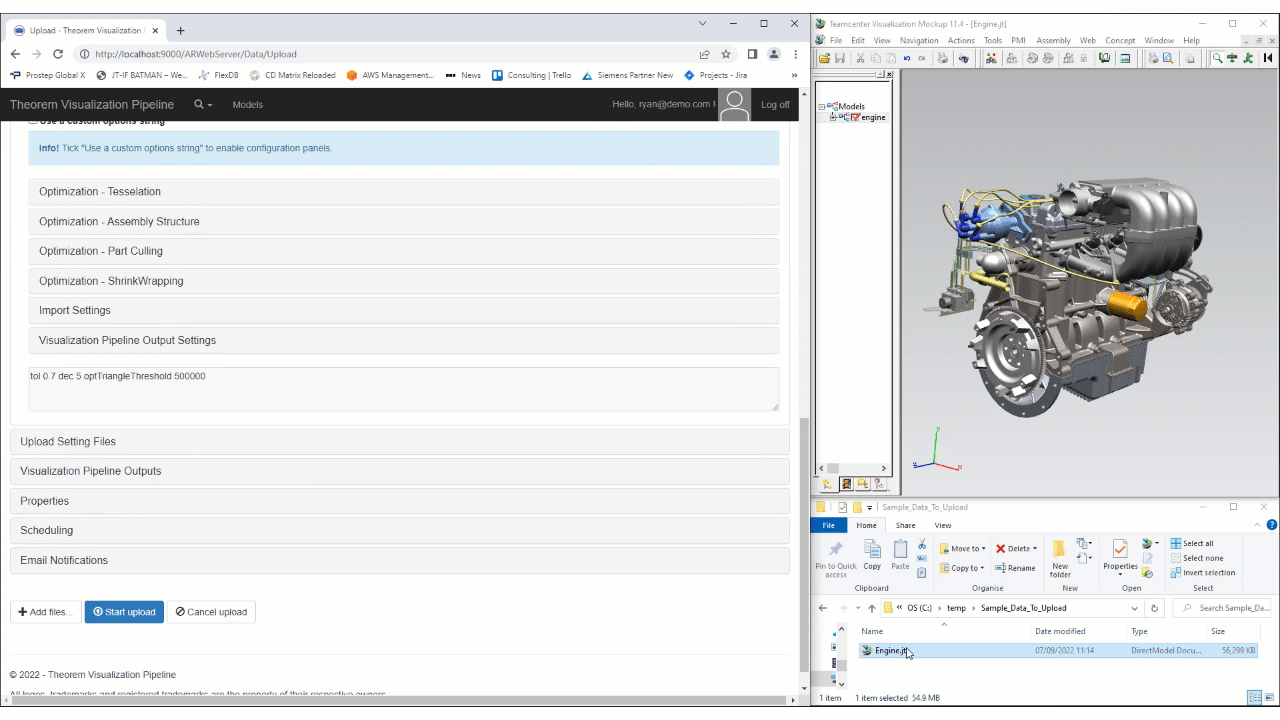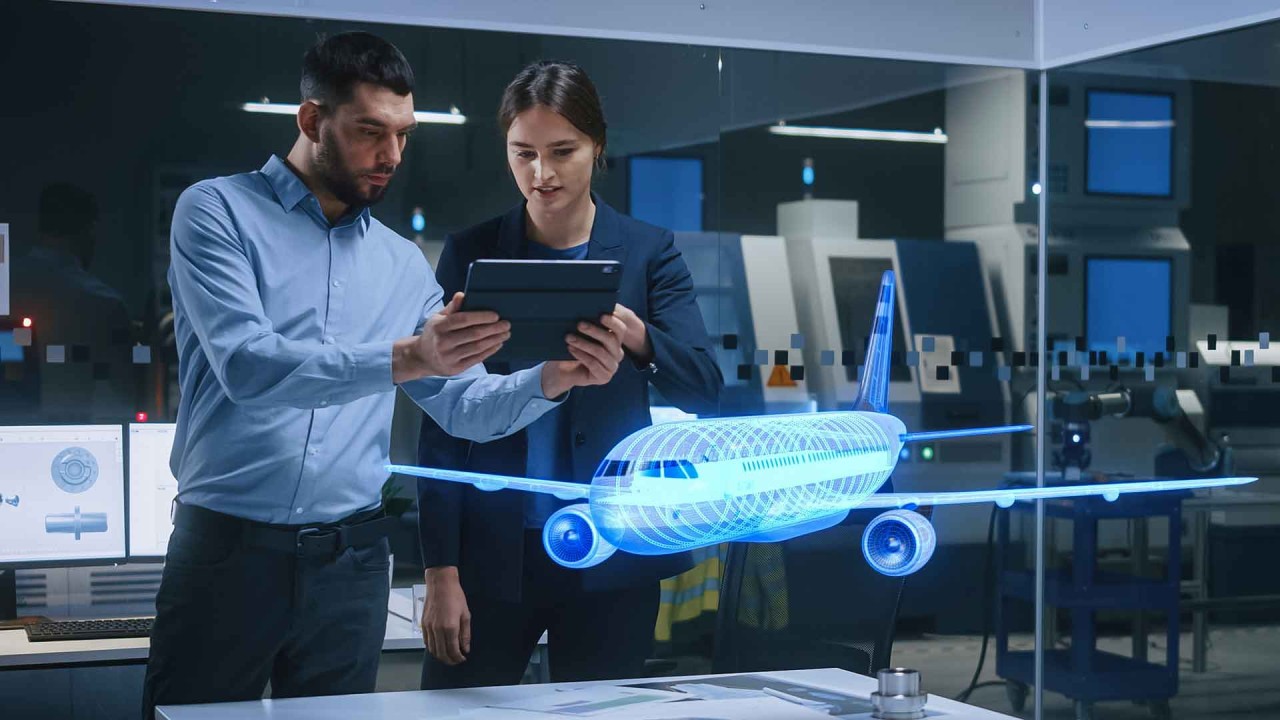Adoption of Extended Reality (XR) requires investment in time, money, and resources, but there are many benefits to XR. For those still at the beginning of their XR journey, understanding which uses cases could benefit from XR, and which devices are needed to achieve this, is especially important. While companies that have already made investments in XR may still need to develop strategic business plans around their planned use case(s), companies who are already using the technology can discover new ways to utilize it.
Extended Reality is a big step towards digital transformation for engineering and manufacturing companies who are looking for a way to extend the value of their design data in the latest technologies. XR enables users to better understand their 3D design data, at full scale and in context, individually or collaboratively to aid communication, reduce costs, and enhance design and manufacturing processes. However, despite these initial benefits being clear, many companies don’t know precisely what to use XR for, especially if they are still in the early stages of adoption.
One question that we frequently hear is “what type of XR technology and device is best?” The simple answer is “it depends upon the use case”.
Let’s have a quick look at the differences between the technology types:
- Virtual Reality (VR) immerses the users in a completely digital world with headsets such as the HTC VIVE and Oculus Rift.
- Mixed Reality (MR) uses headsets such as the Microsoft HoloLens and Magic Leap to project a holographic representation of their digital data in their real-world environment.
- Augmented Reality (AR) enables users to visualize/overlay the digital, over the real world, using readily available handheld devices such as phones and tablets.
Alongside this, there are also a number of devices that merge the benefits of both VR and MR by allowing users to switch between each mode. These include the Apple Vision Pro and Meta Quest.
It should be noted that without properly preparing and optimizing data for use in XR, users can have a poor experience, causing further confusion about how to use the technology, or if the technology is suitable.
So, what can XR do, and what are some of the most common use cases?
Enhance the Design Review Process

One area of engineering and manufacturing that XR can help to improve is the design review process. Designs will go through many iterations throughout their project lifecycle of design to manufacture, and it is important to understand what these changes are, and how they affect the end product. With XR’s visualization capabilities, users can get a fuller understanding of their designs, and complete an in-depth analysis of their design data, without requiring a physical prototype so early on in the process.
The collaborative capabilities of XR are particularly useful in design reviews, since users can join in a session from anywhere in the world using a range of VR, MR, and AR devices. This can significantly cut down on travel time and associated costs, by reducing the need for users to travel to review physical prototypes.
Better Customer Engagement
XR can also be used to better engage with customers at events and in person meetings. Images often don’t convey all the information you need them to and often products are too large and cumbersome to be taken to customers.
However, with XR, the digital representation of the product can be visualized at full scale, providing an up close and immersive experience for the customer. In this case, users can replace physical products with MR or VR headsets, not only to highlight their advanced technical and innovative capabilities, but by bringing potential customers closer to your products, users are ensured a memorable experience. Alternatively, by providing QR codes to scan using Augmented Reality, companies can have a more convenient option which allows multiple people to review the data at once.
Augmented Reality could also be used to allow users to visualize products on their own. Users can include links to specific products to be viewed in AR or their website, allowing customers to browse at their own pace. This is much more interactive than simply looking at a catalogue image.
Improving Factory Layout Planning

It can be difficult to contextualize a factory layout when viewing designs on a 2D screen, because the data will lack context and scale. This can often lead to misinterpretations and misunderstandings, but XR can fix this issue by enabling users to visualize these large data sets at full scale. By using XR, users can identify and address clashes or other issues earlier in the process, saving companies both time and money by minimizing costly delays. Additionally, visualizing potential layouts can lead to a better final result by improving risk assessment during planning, allowing traffic flow to be evaluated, and optimizing the use of space.
Interactive Training
Training will always be important in engineering and manufacturing; a well-trained team results in fewer errors and delays. Interactive training guides can be created in XR to take a user through immersive step-by-step instructions. These immersive guides help information be retained quicker, making it more cost-effective training solution. Additionally, training with these guides can help to improve muscle memory since each step is a repetitive task conducted in a safe environment.

This can be particularly important when providing training on techniques that could cause delays, such as machinery needing to be shut down. In these cases, initial training can be provided in XR to help to reduce errors. Often these delays can be very expensive, making XR a cost-effective solution.
Along with this, these XR guides can also aid experienced workers too. These step-by-step instructions accompanied by immersive visual information in XR can help with complex builds, reducing the likelihood of errors; or inspections, enabling easily understood checklists to be created.
Comparing Digital Models and Physical Objects

Comparing digital and physical models is another great use case for XR. With AR or MR, users are able to overlay a digital model with its physical counterpart, making comparisons much more intuitive. This is particularly useful for inspections, with XR informing the user of any detected differences which may indicate an issue with the physical model.
Developing XR Applications
There are many out-of-the-box XR experiences for a wide range of use cases; however, many companies still opt to develop their own, either in-house, or commissioned applications using Unity or Unreal Engine. Even when an XR app is specially developed, issues will arise when changes are needed, as data will need to be re-prepared for use in XR devices.

For XR to be used to its full capabilities, data must be optimized effectively. However, there are tools available, such as the Visualization Pipeline, that can prepare data for XR automatically, or even in batch when processing large quantities of data, with very little manual input as configurations can be saved.
In Short
There are many ways that Extended Reality can improve engineering and manufacturing processes. XR’s visualization capabilities enhance design reviews and factory layout planning while also providing the ability to collaborate with team members globally. XR can also help with training using immersive guides, while overlaying digital models with physical objects can aid in inspection. Finally, XR can be used to give customers a more engaging experience when viewing your products. For all of these XR use cases, and any others you may have, it is important to prepare and optimize your data for use in XR. This can be made easier and more efficient using a tool such as the Theorem Visualization Pipeline.
To learn more or talk to our experts about your use case contact our team of XR specialists today or request a TheoremXR demo to get started today.



